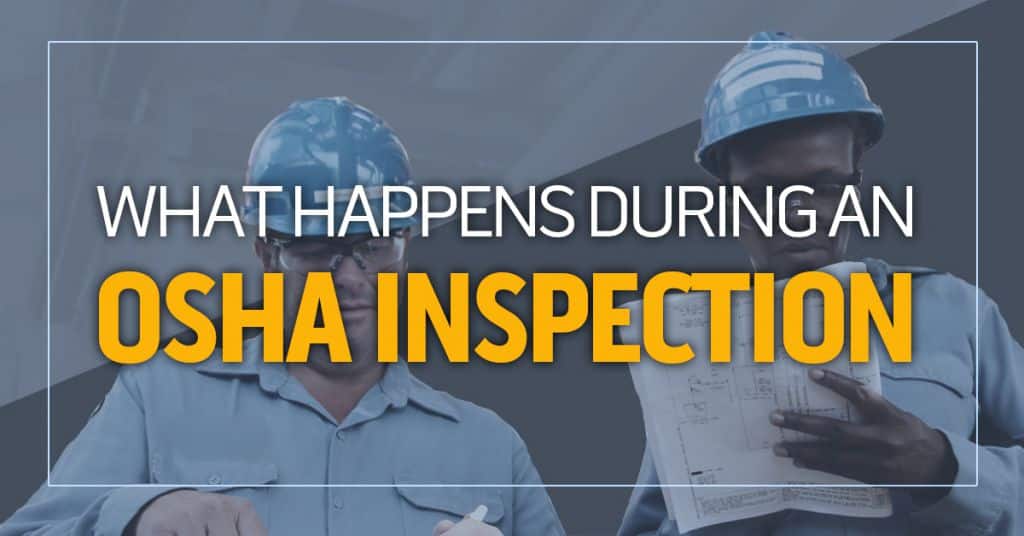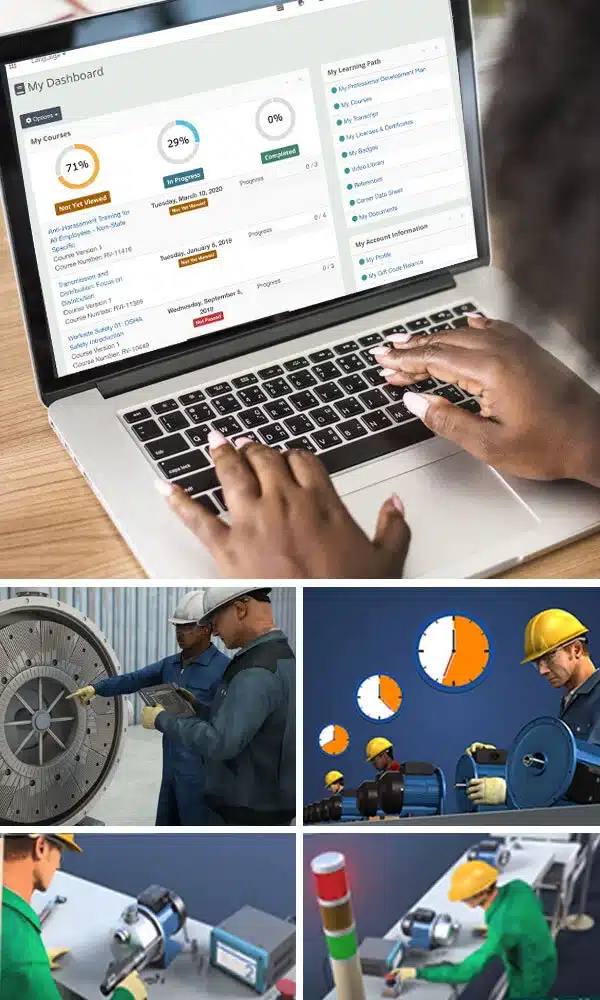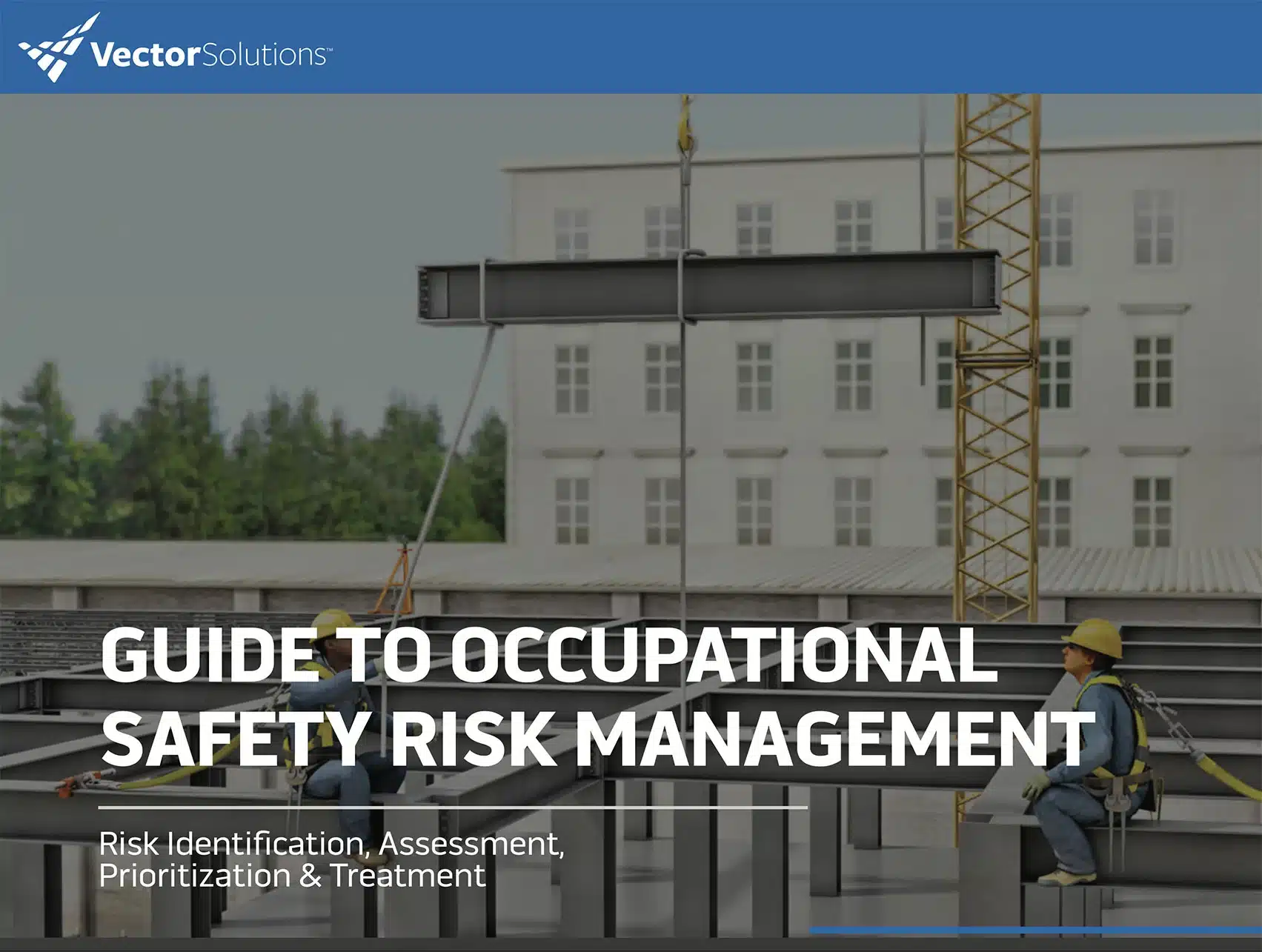March 5, 2018 6 min read
What Happens During an OSHA Inspection?
Industry:
Solution:

In recent articles, we’ve listed 6 Common Triggers of an OSHA Inspection and 10 Hazards OSHA Inspectors Commonly Look For, and both articles drew a lot of reader attention.
As a result, in this article we’re going to explain what typically happens during an OSHA inspection. And in the future, look for another article on how to prepare for an OSHA inspection.
With that intro down, let’s learn more about exactly what you can expect to happen when an OSHA inspector shows up at your worksite.

Vector EHS Management Software empowers organizations – from global leaders to local businesses – to improve workplace safety and comply with environmental, health, and safety regulations.
Learn more about how our software can save you valuable time and effort in recording, tracking, and analyzing your EHS activities.
Learn more about how we can help:
- Incident Management Software →
- EHS Inspection Software →
- Key Safety Metrics Dashboard →
- Learning Management System (LMS) and Online Training Courses →
- Mobile Risk Communication Platform
Download our EHS Management Software Buyer’s Guide.
What to Expect During an OSHA Inspection of Your Workplace
We’ve explained the basics of what to expect during an OSHA inspection below. The information in this article is drawn from the OSHA “OSHA Inspections” Fact Sheet and from The National Council for Occupational Safety and Health’s The OSHA Inspection: A Step-by-Step Guide. We’ve distilled that information for you here, but of course it’s always great to go back to the source and to do additional research about OSHA inspections as well.
Requesting an Inspection
There’s probably enough concern about OSHA performing inspections for their own reasons that some companies may not know or simply forget that employers can also request a voluntary OSHA inspection and that these can be very helpful to the employer.
See this OSHA website on OSHA Onsite Consultations for this on this, and watch for a future article on this topic here as well.
The Pre-Inspection Preparation
OSHA inspectors do their homework before they show up at your site for an inspection. This includes researching the inspection history of your worksite, reviewing the operations and processes you use and the standards most likely to apply in your workplace. They even gather up PPE and testing equipment they expect to need at your site.
Advanced Noticed of Inspection (Not Likely)
OSHA rarely gives employers advance notice of an inspection. In fact, in many case it’s a crime for an OSHA employer to give an employer advance notice of an upcoming OSHA inspection.
There are four exceptions to this, in which OSHA will give employers advance notice of an upcoming inspection:
- In cases of imminent danger, with the hope that management will fix the condition immediately
- When the inspection must occur after regular business hours or when special preparations are required
- If it’s not likely that management and worker representatives will be on-site during the inspection unless advance notice is given
- If there are other circumstances that cause the OSHA Area Director to think advance notification would lead to a more complete inspection (such as in the event of a fatality investigation)
Arrival & Presentation of Credentials
When the OSHA compliance officer arrives, he or she will provide credentials so you’ll know it’s really an OSHA rep.
Those credentials will include:
- Photograph
- Serial number
The Opening Conference
Your OSHA inspection will begin with an opening conference.
During the opening conference, the OSHA compliance officer will explain why your workplace is being inspected and will explain what will happen during the inspection, including walkaround procedures, employee representation, and employee interviews.
During the inspection, the employer will select a representative to accompany the OSHA compliance officer during the inspection. An authorized representative of the employees also has the right to go along during the walkaround.
During the inspection itself, the OSHA compliance officer will consult privately with a number of employees, whether the compliance officer is accompanied by an authorized representative of the employees or not.
The Walk Around
During the walk around, the OSHA compliance officer, the employer representative, and any employee representative (if applicable) will walk through the parts of your workplace covered by the inspection.
During the walk around, the compliance officer will inspect for hazards that could cause injury or illness to employees. In doing so, there may be times the OSHA compliance officer points out hazards that can be corrected immediately. You’ll still get a citation for these (the law requires it), but it’s still in your best interest to address and control the hazard because it is evidence of good faith on your behalf.
The OSHA compliance officer will make every reasonable effort to minimize work interruptions during the walk around and, if they observe any trade secrets, will keep them confidential.
It’s also worth knowing that during the walk around, the OSHA compliance officer will review your worksite injury and illness records (have them readily available) and your training records and will check to see that the OSHA poster is posted.
Risk Management Guide for Safety
Learn to use risk-management approaches for safety and health management.
Download Now
The Closing Conference
After the walk around, the OSHA compliance officer will wrap things up in a closing conference with both the employer and the employer representative to explain his or her findings.
During this closing conference, the compliance officer will discuss some follow-up actions for the employer to take after the inspection. These actions might include an informal conference with OSHA or something like having the employer contest citations and proposed penalties.
In addition, the compliance officer will discuss OSHA consultation services (mentioned earlier) and employee rights.
Inspection Results
If there are violations of OSHA standards or serious hazards discovered during the inspection, OSHA may issue citations and fines.
A citation will describe the OSHA requirements allegedly violated, list any proposed penalties, and will give a deadline for correcting the alleged hazards. The violations will be categorized as either:
- Willful
- Serious
- Other-than-serious
- De minimis
- Failure to abate
- Repeated
If OSHA is going to issue a citation and penalty, they must do so within six months of the violation’s occurrence. OSHA’s policy when settling penalties is to try to reduce penalties for smaller employers and employers who demonstrate good faith in trying to comply and create a safer workplace. The exception to this is that OSHA will offer no good faith adjustments for alleged willful violations.
You can find more information about OSHA penalty ranges here.
Informal Conference and Inspection Appeals
If citations and/or penalties have been issued as a result of the OSHA inspection, the employer is offered an opportunity for an informal conference with the OSHA Area Director. During this conference, the two parties can discuss citations, penalties, abatement dates, and other things relevant to the inspection.
Remember, OSHA’s primary goal is to correct hazards and maintain compliance, not to issue citations and collect penalties, so you may find that they’ll work with you in these instances.
On the flip side, you DO have the right to formally contest any alleged violations and/or penalties. To do so, you’ll need to send a written notice to the OSHA Area Director within 15 working days of receipt of your citations and proposed penalties.
Any citation, penalties, and abatement date that’s not challenged by the employer or settled become a final order of the Occupational Safety and Health Review Commission.
Re-Inspections
Don’t think that just because you’ve been inspected once by OSHA that you’ll never be inspected again.
In fact, if OSHA witnessed hazards and issued citations, especially more serious citations, that increases the chances that they’ll come back to make sure you’ve corrected the hazards (see our Six Common Triggers for an OSHA Inspection article for more on this).
Conclusion: What Happens During a Typical OSHA Workplace Inspection
There you have it, the basic steps of an OSHA inspection. We hope this makes the OSHA worksite inspection process easier for you to understand.
Since you’re reading this article, you may also be interested in the following OSHA-related articles:
EHS Software Buyer's Guide
Download Now















